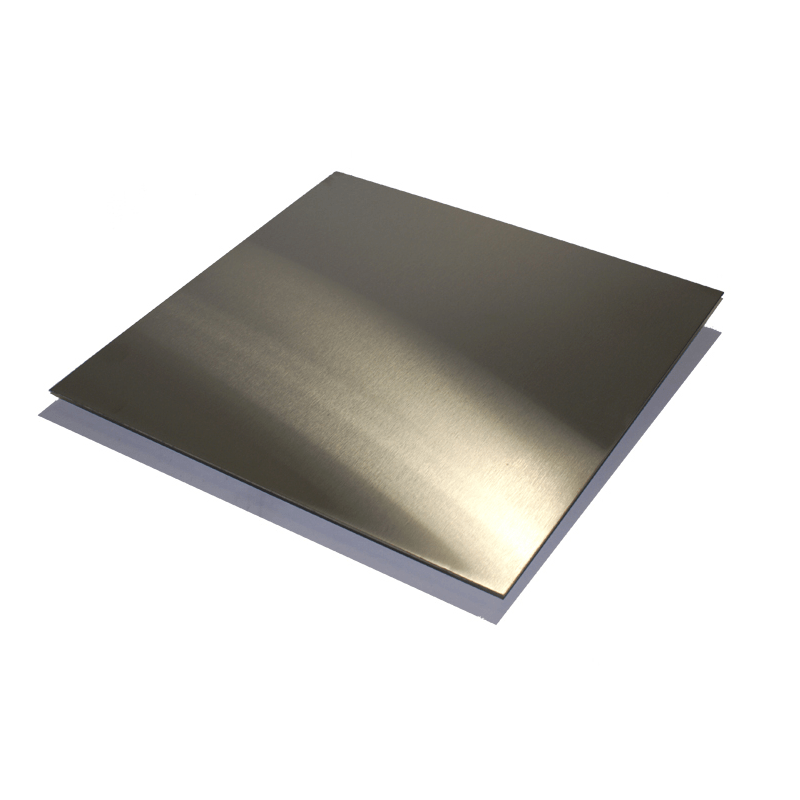
Die rostfreien Stähle 316 und 316L sind beide austenitische rostfreie Stähle mit ähnlicher Korrosionsbeständigkeit und mechanischen Eigenschaften, weisen jedoch einige Unterschiede auf, vor allem hinsichtlich ihres Kohlenstoffgehalts und ihrer Anwendungen. In diesem Vergleich werden ihre chemische Zusammensetzung, Eigenschaften, Korrosionsbeständigkeit, Schweißeigenschaften und typische Anwendungen erläutert.
1. Chemische Zusammensetzung
Der Hauptunterschied zwischen 316 und 316L ist der Kohlenstoffgehalt.
Tabelle 1: Chemische Zusammensetzung
| nach Extrusionsabschrecken und künstlicher Alterung HBS≥80 | Edelstahl 316 | Edelstahl 316L |
|---|---|---|
| Chrom (Cr) | 16–18 % | 16–18 % |
| Nickel (Ni) | 10–14 % | 10–14 % |
| Molybdän (Mo) | 2-3 % | 2-3 % |
| Kohlenstoff (C) | ≤ 0,08 % | ≤ 0,03 % |
| Eisen (Fe) | Balance | Balance |
2. Mechanische Eigenschaften
Beide Sorten weisen ähnliche mechanische Eigenschaften auf, der geringere Kohlenstoffgehalt in 316L führt jedoch häufig zu einer besseren Korrosionsbeständigkeit und einer besseren Schweißbarkeit.
Tabelle 2: Mechanische Eigenschaften
| Eigentum | Edelstahl 316 | Edelstahl 316L |
|---|---|---|
| Streckgrenze (MPa) | 290 – 600 | 290 – 600 |
| Zugfestigkeit (MPa) | 580 – 750 | 580 – 750 |
| Dehnung (%) | 40 % oder mehr | 40 % oder mehr |
| Härte (Rockwell B) | 70-90 | 70-90 |
3. Korrosionsbeständigkeit
Beide Güten bieten eine ausgezeichnete Korrosionsbeständigkeit in verschiedenen Umgebungen, aber 316L hat in bestimmten Anwendungen aufgrund seines geringeren Kohlenstoffgehalts einen Vorteil, der das Risiko von Karbidausfällung und interkristalliner Korrosion verringert.
Tabelle 3: Korrosionsbeständigkeit
| Korrosionstyp | Edelstahl 316 | Edelstahl 316L |
|---|---|---|
| Allgemeine Korrosion | Sehr gut | Sehr gut |
| Lochfraßwiderstand | Exzellent | Exzellent |
| Spannungsrisskorrosion | Mäßig | Besserer Widerstand |
| Interkristalline Korrosion | Bei unsachgemäßer Schweißung möglich | Geringeres Risiko durch geringeren Kohlenstoffgehalt |
4. Schweißbarkeit
Die Schweißbarkeit ist ein wichtiger Faktor bei der Auswahl von Edelstahlsorten für den Bau.
Tabelle 4: Vergleich der Schweißbarkeit
| Feature | Edelstahl 316 | Edelstahl 316L |
|---|---|---|
| Allgemeine Schweißbarkeit | Gut, aber Vorsicht ist geboten, um Karbidausfällungen zu vermeiden | Hervorragender, geringerer Kohlenstoffgehalt reduziert das Risiko der Karbidbildung |
| Vorbehandlung vor dem Schweißen | Im Allgemeinen nicht erforderlich | Im Allgemeinen nicht erforderlich |
| Nachbehandlung nach dem Schweißen | Möglicherweise ist ein Glühen erforderlich, um die Eigenschaften wiederherzustellen | Im Allgemeinen ist keine Nachbehandlung nach dem Schweißen erforderlich |
5. Bewerbungen
Die Wahl zwischen 316 und 316L hängt häufig von den spezifischen Anwendungsanforderungen ab, insbesondere hinsichtlich der Korrosionsbeständigkeit und der Schweißbedingungen.
Tabelle 5: Typische Anwendungen
| Anwendungsbereich | Edelstahl 316 | Edelstahl 316L |
|---|---|---|
| Marineanwendungen | Bootsbeschläge, Schiffszubehör | Wird häufiger für Unterwasseranwendungen verwendet, bei denen Korrosion von entscheidender Bedeutung ist |
| Chemische Verarbeitung | Tanks und Rohrleitungen für verschiedene Chemikalien | Bevorzugt in Umgebungen mit Chlor und hohem Salzgehalt |
| Lebensmittel- und Pharmaindustrie | Lebensmittelverarbeitungsgeräte | Bevorzugt für hygienische Anwendungen; weniger anfällig für Korrosion oder Rost |
| Schweißkonstruktionen | Strukturelle Anwendungen, die eine hohe Festigkeit erfordern | Wird für dünnwandige Abschnitte verwendet, um Verformungen beim Schweißen zu reduzieren |
| Öl- und Gassektor | Ventile, Rohrleitungen und Ausrüstung | Einsatz in Umgebungen, die korrosiven Medien ausgesetzt sind |
Zusammenfassung der Unterschiede
| Feature | Edelstahl 316 | Edelstahl 316L |
|---|---|---|
| Kohlenstoffgehalt | ≤ 0,08 % | ≤ 0,03 % |
| Korrosionsbeständigkeit | Gut, mit Potenzial für interkristalline Korrosion | Besser aufgrund des geringeren Kohlenstoffgehalts |
| Schweißbarkeit | Gut, aber Vorsicht geboten | Hervorragend, reduziertes Korrosionsrisiko |
| Kosten | Im Allgemeinen niedriger | Aufgrund des geringeren Kohlenstoffgehalts und der stärkeren Legierung etwas höher |
| Anwendungen | Allgemeine Anwendungen, Marine | Umgebungen mit Chlor und hohem Salzgehalt, Lebensmittel-/Pharmaindustrie |
Fazit
Sowohl die rostfreien Stähle 316 als auch 316L eignen sich hervorragend für Anwendungen, die eine hohe Korrosionsbeständigkeit und gute mechanische Eigenschaften erfordern. Die Auswahl zwischen ihnen hängt in der Regel von den spezifischen Umgebungsbedingungen und -anforderungen wie Schweißen oder Anfälligkeit für interkristalline Korrosion ab.
- Edelstahl 316 eignet sich für ein breites Anwendungsspektrum, beim Schweißen und in korrosiven Umgebungen ist jedoch Vorsicht geboten.
- Edelstahl 316L Bietet eine verbesserte Beständigkeit gegen interkristalline Korrosion und wird für anspruchsvollere Bedingungen, insbesondere beim Schweißen, bevorzugt.
Die Auswahl der richtigen Sorte ist für die Gewährleistung der Leistung und Langlebigkeit von Komponenten in verschiedenen Branchen von entscheidender Bedeutung.
